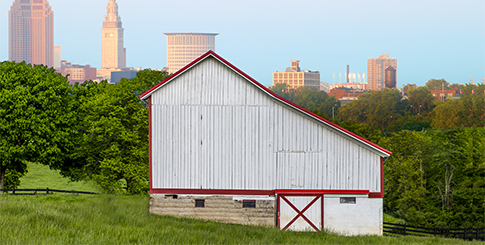South of I-70, which crosses below the state’s midsection, is another hotbed of agricultural activity near Cincinnati. Alice Chalmers can attest to the region’s fertile fields. As the founder and general manager of the Ohio Valley Food Connection, LLC, Chalmers runs a food hub that receives fruits and vegetables from growers then distributes to restaurants and specialty retailers in the Cincinnati area.
“We source from 70 farms within 110 miles of here and specialize in produce harvested within 24 hours,” she explains. “There are also growing pockets of commercial produce, especially pumpkins and some hard squash, on southern Ohio farms traditionally growing tobacco.”
Marketing: Ohio Proud
When it comes to fruit, apples are plentiful but vie for attention against pears, plums, grapes, and a bevy of seasonal berries. “Don’t forget Ohio strawberries,” touts Lori Panda, senior program manager of the state’s Ohio Proud marketing initiative, of the highly popular perennial.
Operating as part of the Ohio Depart-ment of Agriculture, the Ohio Proud program celebrates its twenty-fifth anniversary in 2018. “Ohio Proud was created to increase sales and awareness of Ohio food and agricultural products,” Panda says, and by all accounts, has done so exceeding well. A celebration to mark the milestone will take place at the 2018 Ohio State Fair.
Some might be surprised to know organizations and companies that sell and promote Ohio Proud products, but do not grow them, can also participate in the program by becoming affiliate members. Retailers, distributors, and restaurants can use the Ohio Proud logo for any products licensed by the program and be listed on the Ohio Proud website. This expands awareness of the program and further supports buy-local initiatives.
Labor and Pest Challenges
Unlike many other production areas in the United States, labor is not a significant obstacle for grower-shippers in Ohio.
“We seem to have close to adequate labor force available,” observes Holthouse, who says the region remains popular with workers, since it’s a long season with mild weather, and many growers pay overtime.
The other major challenge for growers, pests and disease, is heavily influenced by weather, such as a too-warm winter or heavy rains and flooding, like what occured in February around Cincinnati.
Experienced growers generally have a handle on managing the Midwest’s sometimes rampant humidity and resulting pests, but certainly appreciate when Mother Nature cooperates with the growing cycle.



